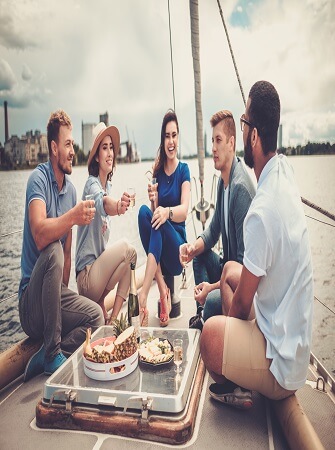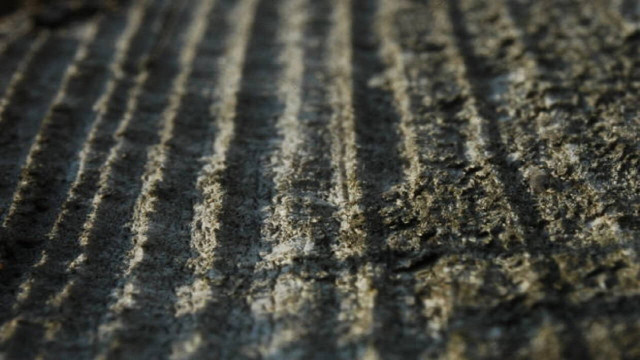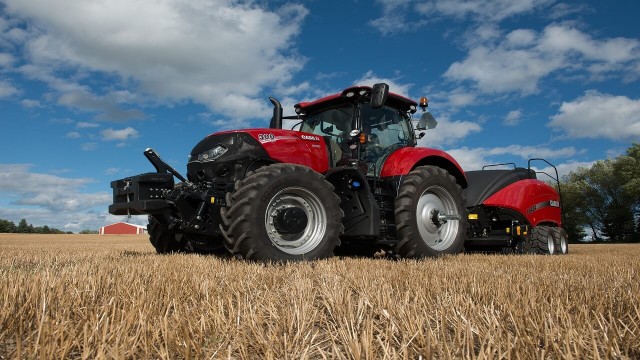
Importance of Fruits and Vegetables
October 10, 2022, 10:57 am
Fruit and vegetables are a vital part of diet around the world. Rice, potatoes and bread are near-universal; it is our fruit and vegetables that help define our culture
Importance of Fruits and Vegetables
This article examines the consumption side of the fresh fruit and vegetable system and profiles the nutritional and health benefits of fruits and vegetables, looks at consumption levels around the world, and the reasons for the sad fact that most people do not eat enough of them to maintain a healthy life and how to correct that.
Consumption of Fruits and Vegetables
Parents around the world try to cajole their children to eat their greens or snack on fruit rather than junk food. They do so for a reason: fruit and vegetables are good for you.

The evidence is clear. Fruit and vegetables are an important part of a healthy diet. They help children grow and support body functions and physical, mental and social well-being at all ages. They can help prevent all forms of malnutrition (undernutrition, micronutrient deficiency, overweight and obesity) and reduce the risk of non-communicable diseases.
LEARN TESTED AND PRACTICAL METHODS FOR SUCCESSFUL FRUITS AND VEGETABLE FARMING NOW
Together with malnutrition, unhealthy diets are among the top-ten risk factors for disease globally.
Almost all countries make dietary recommendations that include fruit and vegetables, using depictions such as triangles, pyramids and plates. The recommendations vary from country to country, depending on what is locally available, affordable, and socio-culturally acceptable.
WHO currently recommends consuming at least 400 grams of fruit and vegetables each day – or five servings of 80 grams each. The optimum amount depends on various factors, including age, sex, and level of physical activity.

All the guidance promotes a varied diet and a balance between different types of food. Fruit and vegetables are a vital part of this advice
Benefits of Eating Fruit and Vegetables
Consuming enough (or even more than the recommended amounts) of fruit and vegetables has many benefits:
Children’s growth and development.
Fruit and vegetables are rich in Vitamin A, calcium, iron and folate, which can promote good health, strengthen a child’s immune system and help protect against disease, both now and in the future
Longer life.
People who eat more fruit and vegetables live longer than those who do not, according to a large study in 10 European countries
Better mental health.
Eating 7–8 servings a day (more than the recommended minimum of 5 servings) is linked to lower risk of depression and anxiety

Healthy heart.
Fibre and antioxidants in fruit and vegetables can help prevent cardiovascular disease
LEARN TESTED AND PRACTICAL METHODS FOR SUCCESSFUL FRUITS AND VEGETABLE FARMING NOW
Lower cancer risk.
In 128 out of 156 dietary studies, consuming fruit and vegetables was found to lower the risk of lung, colon, breast, cervix, oesophagus, oral cavity, stomach, bladder, pancreas and ovarian cancer
Lower obesity risk.
A number of studies have observed a lowered risk of adiposity and obesity in certain groups who consume fruit and vegetables
Lower diabetes risk.
A systematic review and meta-analysis found higher green leafy vegetable and higher fruit intake was associated with a significant reduction in Type 2 diabetes risk. For every 0.2 serving/day of vegetable intake, there was a 13 percent lower risk of diabetes
Better gut health.
A diet rich in fruit, vegetables and other high fibre, plant-based foods improves gut bacteria diversity and tends to increase bacteria associated with anti-inflammatory compounds linked to improved metabolism. Higher consumption of fruit and vegetables has also been shown to decrease the prevalence of diverticulosis as well as other digestive problems such as gas, constipation and diarrhoea
Improved immunity.
Adequate intakes of fruit and vegetables may reduce the severity of some infectious diseases. Though they will not protect you against a virus such as COVID-19, recovery from infectious disease is better when consuming fruit and vegetables than with diets low in this food group
Nutritional Contents of Fruits and Vegetables
The colours of fruit and vegetables are often linked to the nutrients and phytochemicals they contain
Purple/Blue Fruits and Vegetables
They contain antioxidant properties that can reduce the risks of cancer, stroke and heart disease.
Examples
Beetroot, red cabbage, eggplant.
Blackberry, blueberry, purple grape, plum, passionfruit

Red Fruits and Vegetables
They can help lower the risk of cancer and improve heart health.
Examples
Red capsicum, radish, tomato.

LEARN TESTED AND PRACTICAL METHODS FOR SUCCESSFUL FRUITS AND VEGETABLE FARMING NOW
Red apple, cactus pear, cherry, red grape, red and pink grapefruit, red guava, raspberry, strawberry, watermelon

Orange/Yellow Fruits and Vegetables
They contain carotenoids that help keep eyes healthy.
Examples
Carrot, pumpkin, squash.

Apricot, grapefruit, lemon, mango, melon, nectarine, orange, papaya, peach, pineapple

Brown/White Fruits and Vegetables
They contain phytochemicals with antiviral and antibacterial properties as well as potassium.
Examples
Cauliflower, chive, garlic, ginger, leek, onion

Banana, durian, jackfruit, white peach, brown pear

LEARN TESTED AND PRACTICAL METHODS FOR SUCCESSFUL FRUITS AND VEGETABLE FARMING NOW
Green Fruits and Vegetables
They contain phytochemicals with anti-cancer properties.
Examples
Asparagus, green bean, bok choy, broccoli, cabbage, green capsicum, lettuce, peas, spinach.

Green apple, avocado, green grape, kiwifruit, lime, cucumber

Fruits and Vegetables Consumption Levels
Worldwide, we consume far less fruit and vegetables than the minimum total of 400 g recommended by WHO for a healthy diet. The amount of fruit and vegetables you need to eat depends on your age, sex, and level of physical activity. Many countries have developed additional recommendations for children, given the importance of fruit and vegetables for healthy growth and development.
LEARN TESTED AND PRACTICAL METHODS FOR SUCCESSFUL FRUITS AND VEGETABLE FARMING NOW
On average, we consume only about two-thirds of the recommended minimum amounts of fruit and vegetables. The quantities vary considerably: people in Central Asia, North Africa and the Middle East consume slightly more than the recommended minimum, while those in sub-Saharan Africa and Oceania consume only about one-third of this. Residents of the Caribbean consume the most fruit, while those in southern Africa consume the least.
Consumption of fruit and vegetables in sub-Saharan Africa is particularly low for example
In South Africa, a study of 3,480 adults aged 50 years or more found that 68.5 percent did not eat enough fruit and vegetables. This was especially true of Black African or Coloured men, men with low educational level, and those with low socio-economic status.
In Benin, school-going adolescents consumed on average only 97 g of fruit and vegetables as compared to the generally recommended intake of 300 g for fruits and 150–225 g for vegetables for this age group.
In Lagos, Nigeria, the same age group knew of the nutritional and health benefits, but only 5.5 percent of those interviewed consumed the recommended minimum amounts
There is only a limited relationship between income levels at a regional level and the intake of fruit and vegetables. People in high-income Western Europe and Northern America consume only half of the ideal amounts, while those in North Africa and the Middle East consume larger quantities, even though incomes in this region are generally lower.
Overall, there is little apparent relationship between the consumption of vegetables with that of fruit. If we exclude those areas with low levels of consumption, there is a strong negative correlation between the intake of fruit and that of vegetables: the more fruit people consume, the fewer vegetables they consume, and vice-versa. Possible reasons for this could be:
Where incomes are generally low (as in sub-Saharan Africa and South Asia), people tend to spend their limited food budget on cheaper staple foods. Cultural preferences and the low availability of fruit and vegetables may also play a role.
In other parts of the world, consumption levels are higher, but consumers still have a limited budget for fresh produce (or wish to consume only a certain amount of such items). They balance their spending or consumption: if they consume more fruit, they eat fewer vegetables. The levels of each depend on factors such as price, availability and culture.
Why do people not eat enough fruit and vegetables?
Eating behaviours are complex and shaped by interwoven physical, biological, psychological, historical, and cultural factors. While it is not possible to examine all the factors that influence fruit and vegetable consumption here, below are a few factors that emerged during a FAO/WHO workshop in 2020:
LEARN TESTED AND PRACTICAL METHODS FOR SUCCESSFUL FRUITS AND VEGETABLE FARMING NOW
Availability.
Many fruit and vegetables are seasonal and perishable and are not available year-round. High losses during harvesting, transport and storage reduce the quantities available in shops and markets. This is compounded by the lack of refrigeration and transport facilities warehouses and retail outlets, which shortens the shelf-life of especially perishable items. Breakdowns in supply chains disrupt the marketing of produce and reduce the incentives for producers to grow these crops. Low demand creates low supply, and vice versa: a chicken-and-egg situation.
Affordability.
Fruit and vegetables can be a relatively expensive part of the diet. Many of the poor spend what food money they have on cheap, stomach-filling, energy-rich, staple carbohydrates such as rice or cassava. They add small amounts of vegetables and animal products for taste when available. Fruit can also be a luxury item, but may be affordable when production is at its peak. Those with fields or gardens can grow and eat their own fruit and vegetables, but many crops are seasonal and perishable, and are therefore not always available.
Education and culture.
Food is intensely cultural: our tastes are influenced by the culture we are brought up in and how we were brought up as children. Indeed, food is an important part of culture itself: what we cook and eat in part determines our identity. Immigrants prefer to eat food they are used to; immigrant communities frequent shops selling the products with which they are familiar. But cultures and diets sometimes change, and rising incomes and urban lifestyles with a preference for “convenience” are often associated with an increased intake of sugar, oils, animal products and highly processed foods, and lower consumption of fresh fruit and vegetables – a change known as the “global nutrition transition”
Lack of knowledge.
People may like (or dislike) fruit and vegetables for their taste but not know of their value for health and nutrition. The needs of children, teenagers, adults and the elderly differ, as do those of men and women. Women who are pregnant or lactating need extra nutrition, but they and their families may not be aware of this. People living with HIV/ AIDS, and those with diabetes and other health problems, also need special diets. But nutrition and health awareness campaigns are often poorly targeted and fail to match the physiological needs of these specific population groups.

Competition with alternatives.
Processed foods are backed by powerful advertising that present them as tasty and socially desirable.
Aggressive marketing promotes unhealthy foods and beverages in schools, offices and shops. Sugary drinks are easier to buy and consume than freshly pressed juice; sweets and packaged snacks have a longer shelf life than fruit. Such foods compete with fruit and vegetables for the same dollar, euro, franc, peso, pound, rupee or shilling
.
Food safety.
Unlike many processed foods, fruit and vegetables have to be washed or peeled and perhaps cooked before they can be eaten. Eating contaminated fruit and vegetables may make you ill. The contamination may happen during production – from irrigation water, the soil, fertilizer or pesticides – or come from unsanitary processing and preparation.
National policies.
Governments concerned about food security, the balance of trade and geopolitical concerns have focused a great deal of attention on staple crops and export commodities. They have devoted far less attention to fruit and vegetables. As a result, far fewer investments have been made by medium-sized and commercial farmers in their production. Trade policies have also promoted the influx of cheap, imported fruit and vegetables to the detriment of locally produced, indigenous varieties. This has contributed to the low consumption of neglected, underutilized but nutritious fruit and vegetables.
Improving health and nutrition
Alongside the recent COVID-19 pandemic, we are also facing a pandemic of non-communicable diseases, many of them caused by poor nutrition. This requires decisive action. The policy areas needing attention include the following.
Promoting production.
Interventions are needed to help small farmers produce more fruit and vegetables. That will mean improving agricultural extension services to promote good farm practices, greenhouse farming methods, good soil management and the availability of inputs such as seed and fertilizer. Attention is needed to empower women, who tend many a field and home-garden. Imports are important for supplying the nutrition needs of countries that do not produce enough fruit and vegetables domestically.

Improving availability.
The availability of fruit and vegetables can be increased by improving the value chain that connects growers with consumers. This includes transport, marketing, storage and processing facilities, labour resources and finance to make the value chain more efficient and to reduce losses and waste.
Improving affordability.
Subsidies can increase the intake of fruit and vegetables.
Promoting consumption.
Education and information are key to promoting fruit and vegetables as part of the diet. The poor consume less (or opt for cheaper alternatives) because they cannot afford them. In high-income countries, many people choose to eat unhealthy alternatives. Better targeted information and incentives can help change such behaviours.
Integrating nutrition in school curricula.
Schools are an important aspect of such promotional campaigns. Nutritional messages and horticultural production integrated in curricula can help children acquire life-long skills and promote the consumption of fruit and vegetables from the early years of life. School feeding-programmes, already important in the effort to end hunger, should be part of national education policies as well. Legislation can promote the inclusion of fruit and vegetables in school canteens, vending machines and procurement practices.
LEARN TESTED AND PRACTICAL METHODS FOR SUCCESSFUL FRUITS AND VEGETABLE FARMING NOW
Marketing restrictions on the sale near to schools of foods that are high in salt, sugar and trans-fat can help improve the school food environment.
Measuring nutrition.
Further efforts are needed to measure the consumption of fruit and vegetables, along with other dietary components. Progress is being made. Two indicators are the Minimum Dietary Diversity for Women of Reproductive Age, and the Infant and Young Child Feeding Minimum Dietary Diversity. The former is included in the suite of nutrition indicators planned for around 90 countries that will conduct demographic health surveys.
Studies on nutrition campaigns have so far focused largely on content and process rather than on impact. A number of good practices have not yet been properly documented. Such studies are urgently needed.
LEARN TESTED AND PRACTICAL METHODS FOR SUCCESSFUL FRUITS AND VEGETABLE FARMING NOW
REFERENCES
FAO International Year of Fruits and Vegetables 2021
Readers Digest Family Health Guide and Medical Encyclopedia












Share This Article: